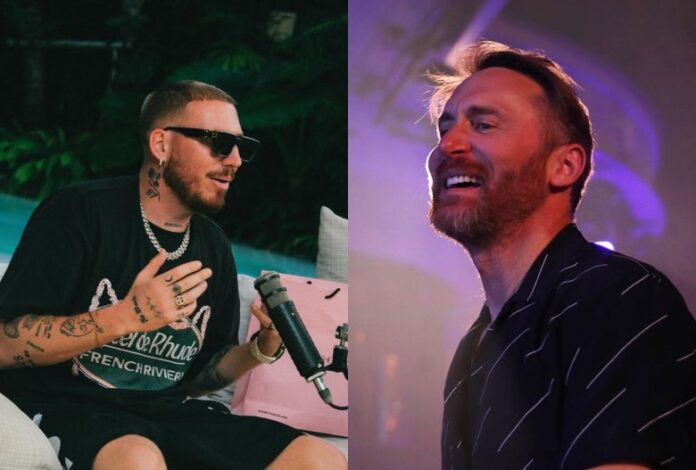Beings endowed with super strength and speed, stalking prey at night to feast upon their blood and killed by a stake through the heart. Slavic tales of the vampire existed long before Bram Stoker's 1897 novel Dracula, and their influence in popular culture all over the world continues to grow. The elusive being captures the imagination once more in The Case Study of Vanitas, where a human doctor is immersed in the vampire world in an attempt to save them from a maddening curse.
In many ways, the vampires of The Case Study of Vanitas adhere to tradition. They feed on blood, have extraordinary strength and beauty and the core cast are either aristocracy or strongly connected to the upper class. However, the anime subverts traditional vampire lore when it comes to love and relationships. Vampires have long been associated with a perverted love obsessed with beauty and lust instead of emotional connection, but it's actually a human among vampires who best exemplifies this behavior in Vanitas.
The 1872 novella Carmilla depicts the story of Laura, who is preyed upon by the vampire Carmilla in a lesbian relationship, which was viewed as extremely sinful at the time. In 1885, Queen Victoria enacted anti-sodomy laws as part of a culture obsessed with purity. Stoker's novel followed this trend of making villains also sexual deviants, with Dracula pursuing and eventually converting the beautiful Lucy while keeping three vampire brides at his castle.
These vampires used their status and supernatural abilities to stalk and dominate their prey, often creating a dependency on their goodwill to prevent humans from lashing out. The act of sucking blood was seen as inherently lustful and wicked, especially since it usually involved stealing into young women's bedchambers at night and satisfying a carnal hunger.
Several of these elements appear in The Case Study of Vanitas. Vampires provide an aphrodisiac to their victims, making it so the victim feels pleasure at having their blood sucked. Scenes of bloodsucking have been portrayed as intimate or lustful, keeping true to the legends of Carmilla and Dracula.
However, other aspects of the vampires differ drastically, displaying love or the desire to love in an equal relationship. Noe feels platonic love for Louis and Dominique, and Dominique seems to hold romantic notions toward Noe. Jeanne is intensely affectionate for Luca, who cannot wait to grow up so he can act on his romantic feelings in return. Only the effects of the curse force Vanitas' vampires into the feral beasts of legend. Noe in particular displays enthusiasm and love for the world, walking proudly in the sun as he discovers Paris for the first time.
In contrast, it's the human doctor Vanitas who perverts love and casts himself in the shadow of vampire legends. Vanitas claims to be in love with Jeanne, yet that love is twisted and based on pleasure rather than emotional connection or even mutual feelings. He enjoyed the effects of the aphrodisiac when Jeanne first drank from him, and blackmails her into only drinking from him in the future. Vanitas says he doesn't really know what love is, only that Jeanne makes his heart race and his body tremble -- reactions associated with arousal. He likes Jeanne because she is fun to tease and has a large bosom, but especially because she will never love him back.
Unrequited love is a trademark of vampires, who desire a dominant relationship without mutual love. Vanitas wishes to chase the pleasure he felt when Jeanne fed from him without ever connecting on a deeper level. Despite being the one whose blood is consumed, he is the Dracula of The Case Study of Vanitas. The fact that Jeanne was dressed as a bride when she first drank Vanitas' blood likens her to Dracula's brides, the young vampires who tormented Jonathan Harker and attempted to corrupt his relationship with Mina. Vanitas' relationship with Jeanne is completely vampiric in nature: lustful, dominant and in no way allowing for pure love.
Besides his own vampiric nature in love, Vanitas responds most positively when vampires act in a more traditional manner toward him. His personality tends to steamroll over companions and he shows no regard for others' autonomy, declaring he will save the vampires using his own methods whether they like it or not. It isn't until Noe blatantly disregards his own wishes that Vanitas sees him as an equal. When he attempts to get close to Vanitas and understand his motivations, he is denied as Vanitas uses lies, mocking and a knife to the throat to drive him away.
This exchange completely changes when Noe informs him, "Perhaps you have got the wrong idea, but I really don't like you." He says his desire to follow Vanitas is not out of companionship, but because he wants to see what Vanitas will do. Noe continues, "If you refuse me, I shall still do as I please, your will notwithstanding." The notion that he and Noe would never become close may well be what allowed Vanitas to let down his guard. To him, there is no chance of them developing mutual fondness for each other, so it is alright to allow Noe to follow him on his quest.
The equilibrium between Vanitas and Noe will not last. We know from Noe's narration that Vanitas will become his dear friend during their time together, so while he does disregard Vanitas' wishes in a traditional vampiric way, the story is leading the two into a relationship of mutual care and respect. Their love -- if truly defying vampiric traits of lore -- will be focused on emotional connection, untainted by the need for dominance and not revolving around the typical pleasure the vampire aphrodisiac can bring. It would be very unlike Vanitas' love for Jeanne as well as the relationships vampires of legend cultivated with their human prey.
For now, The Case Study of Vanitas continues to portray the main vampire protagonists as the ones chasing after a mutual, healthy love, while the human Vanitas perverts love into lustful, one-sided feelings. The relationship between Vanitas and Noe has the potential to bring out the former's human side, allowing him to give love and want it in return. The anime subverts traditional vampire lore and upends it to create more compelling characters who defy expectation. It even sets up an antagonist who seeks to turn vampires into savage, bloodthirsty beasts, cementing the fact that they are not Carmilla or Dracula in the least. In Vanitas' quest to save the curse bearers from Charlatan, he might have the opportunity to save himself from a vampiric nature as well.
About The Author

